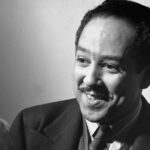Zora Neale Hurston was a prolific African-American writer, anthropologist, and a central figure of the Harlem Renaissance. Her work celebrated the African-American experience and Southern black culture, making her one of the most important black writers in American literature. This biography aims to cover her life, achievements, and the impact of her work, alongside answering the top 20 questions people frequently ask about her.
Early Life and Education
Birth and Childhood
Zora Neale Hurston was born on January 7, 1891, in Notasulga, Alabama, and moved to Eatonville, Florida, with her family in 1894. Eatonville was one of the first all-black towns to be incorporated in the United States, and it played a significant role in Hurston’s life and writing.
Education
Hurston’s pursuit of education took her to Howard University, where she became one of the earliest initiates of Zeta Phi Beta Sorority and began her writing career. She later attended Barnard College on a scholarship, where she was the college’s sole black student. Hurston graduated in 1928 with a BA in anthropology, studying under Franz Boas, a pioneer in American anthropology.
Literary Career
Early Works
Hurston’s early works included short stories and plays, but it was her move to New York City during the Harlem Renaissance that marked the beginning of her significant literary career.
Major Works
Hurston’s most famous work is “Their Eyes Were Watching God” (1937), a novel that explores the life of Janie Crawford, a Black woman in the early 20th century South, through her journey of self-discovery and love. Other notable works include “Mules and Men” (1935), a collection of African American folklore, and “Tell My Horse” (1938), an account of her anthropological research on Caribbean Vodou.
Anthropological Contributions
Hurston’s work as an anthropologist was groundbreaking. She conducted ethnographic research in the Caribbean and the American South, focusing on African-American and Caribbean folklore. Her approach was innovative for its use of vernacular speech and for its focus on the lives and stories of black people, at a time when many anthropologists were primarily interested in “exotic” cultures.
Later Life and Death
Challenges
Despite her early success, Hurston’s later years were marked by financial difficulties and health problems. She worked in various capacities, including as a teacher and a librarian, and continued to write, though she struggled to get published.
Death
Zora Neale Hurston died of hypertensive heart disease on January 28, 1960, in Fort Pierce, Florida. She was buried in an unmarked grave in the Garden of Heavenly Rest. In 1973, Alice Walker, another influential African-American writer, located Hurston’s grave and placed a marker on it, inscribed “Zora Neale Hurston: A Genius of the South.”
Legacy and Honors
Hurston’s work received renewed interest in the 1970s and 1980s, thanks to the efforts of Alice Walker and other scholars. Today, she is celebrated as a key figure in American literature and African-American history.
Top 20 Questions About Zora Neale Hurston
- When was Zora Neale Hurston born?
- January 7, 1891.
- Where did Zora Neale Hurston grow up?
- Eatonville, Florida.
- What was Zora Neale Hurston’s educational background?
- She attended Howard University and graduated from Barnard College with a degree in anthropology.
- What is Zora Neale Hurston famous for?
- Her novel “Their Eyes Were Watching God.”
- Was Zora Neale Hurston married?
- Yes, she was married and divorced twice.
- Did Zora Neale Hurston have children?
- No, she did not have any children.
- What was Zora Neale Hurston’s contribution to anthropology?
- She conducted ethnographic research on African-American and Caribbean folklore.
- How did Zora Neale Hurston die?
- From hypertensive heart disease.
- Where is Zora Neale Hurston buried?
- In the Garden of Heavenly Rest, Fort Pierce, Florida.
- Why did Zora Neale Hurston fall into obscurity?
- Financial difficulties, changing literary tastes, and a lack of publication opportunities contributed to her obscurity.
- How was Zora Neale Hurston rediscovered?
- Alice Walker played a significant role in reviving interest in Hurston’s work in the 1970s.
- What genres did Zora Neale Hurston write in?
- Fiction, anthropology, and autobiography.
- Did Zora Neale Hurston win any awards for her work?
- During her lifetime, she did not receive major literary awards, but posthumously, she has been recognized and honored extensively.
- What is Zora Neale Hurston’s legacy?
- She is considered a seminal figure in American literature and African-American cultural history.
- How did Zora Neale Hurston contribute to the Harlem Renaissance?
- Through her literary and anthropological works, celebrating African-American culture and life.
- What themes are prevalent in Hurston’s work?
- Race, gender, independence, and the South’s folk culture.
- What was Zora Neale Hurston’s relationship with Langston Hughes?
- They were collaborators and close friends for a time but had a falling out over the play “Mule Bone.”
- Did Zora Neale Hurston receive formal recognition during her lifetime?
- She received some recognition but not to the extent of her posthumous fame.
- What are some criticisms of Zora Neale Hurston’s work?
- She faced criticism for her political views and portrayal of African-American dialects.
- Where can I find Zora Neale Hurston’s works?
- Her works are widely available in bookstores, libraries, and online platforms.
Zora Neale Hurston’s life and work continue to inspire and challenge readers and scholars alike. Her legacy as a writer, anthropologist, and icon of the Harlem Renaissance endures, reflecting her profound impact on American culture and literature.





